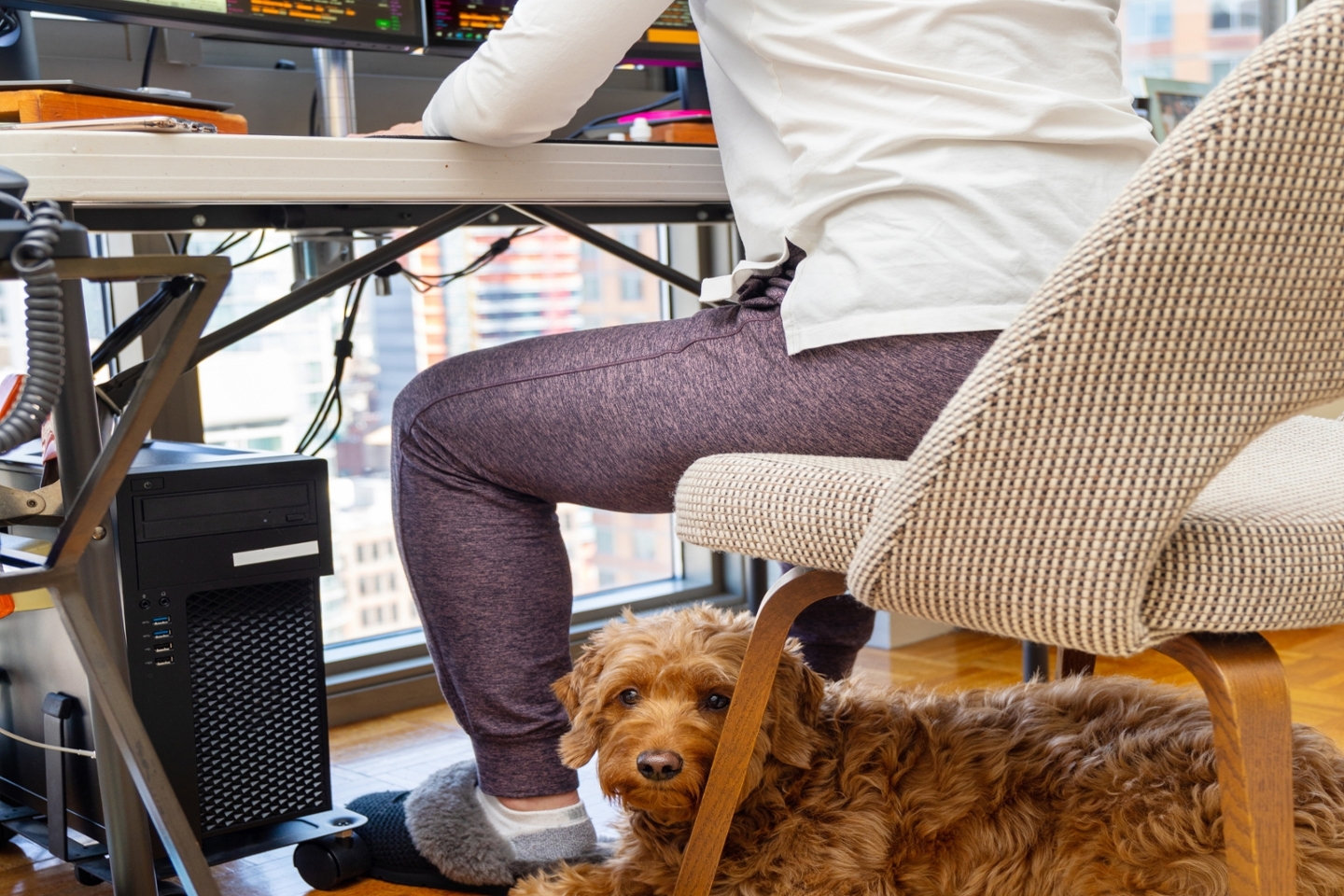COVID-19 one year later: How working from home has affected our health
Anne-Marie Aguilar - 16 March 2021

We’ve been working from home for a year. Hunched over on kitchen stools, working around the clock, constantly distracted. How are we feeling? What have we done to our bodies? And what do rehabilitation professionals have to say about it? This story is Part 1 in a series of COVID-19 reflections from the Faculty of Rehabilitation Medicine. Check out Part 2 and Part 3.
A year ago today I set up a makeshift workstation in my 51-square-metre studio apartment. I turned a tiny Ikea console into a desk and borrowed a rigid wooden chair from my neighbour. I didn’t think much about how impractical this was, because – like most of us – I figured the situation was temporary.
But here I am, 52 weeks (and counting) into our COVID-19 work-from-home experiment. My neck is sore and my eyes are strained. When I remember to eat, I never have enough space for both the plate and the keyboard.
Last year we spoke to ergonomic specialist Linda Miller (’89 BScOT), a clinical assistant professor in the Department of Occupational Therapy in the Faculty of Rehabilitation Medicine, to give us a few tips on how to improve our home office environment. As president and founder of ergonomics consulting company EWI Works, Miller has over 30 years’ experience assessing and designing workspaces to reduce worker fatigue, discomfort and injury.
We followed up with her – one year later – to ask how working from home has affected our health. She told us about the most common complaints she’s heard from clients since the pandemic began:
Wait, what day is it?
Remember the concept of work-life balance? Working from home for long hours without the routine events that used to signal the start and end of a day, like commuting or going for coffee, has thrown us way off-balance.
“Our lack of routine is affecting our mental and physical health,” says Miller. “We’re really encouraging people to adopt daily rituals again.”
Schedule your start time, your breaks, your lunch and your end time, she says, and stick to it! Try to mimic your old routine: go out to get your morning coffee and power down your workspace after your work day is done. “If you’re working and living in the same room, throw a sheet over your desk or hide it with a small curtain or barrier to get it out of your immediate view.”
A sight for sore eyes
Pre-COVID, most of us had natural screen breaks built into our workday, Miller says. “Now we’re sitting and staring, from a fixed distance, at a screen and it’s really hard on the eyes. It’s important to give your eyes a break from the screen.” She suggests periodically looking away from your screen and focusing on something about six metres away.
Another way to mitigate eye strain is to control the amount of light around you, she says. If you’re working in an area with lots of light, make sure the light isn’t creating glare on your screens or shining directly into your eyes.
Moooomm, I’m hungry!
On any given day, working from home brings distractions: the doorbell, the dog barking, the renovations next door. Add to that children, family members or roommates sharing the same environment, and concentrating on work can seem impossible.
“With all these distractions we’re taking double or triple the time to complete tasks that would normally take far less time,” Miller says. “And that contributes to longer work hours.”
Minimize the auditory distractions, she says, by closing a door, wearing noise cancelling headphones and even letting others know not to interrupt you unless necessary.
A cluttered workspace can also make it difficult to concentrate. Take a look at your work area and remove things that aren’t necessary to the job (socks? utility bills?). Avoid eating at your desk and make a point to clean up empty coffee cups or containers.
But how are you doing, really?
Vaccines have arrived, but we don’t know what’s going to happen long term. We miss seeing our friends, family and co-workers. We’re uneasy about job stability. All of these things have affected our mental health, Miller says. And even though we’re spending so much time online, we’re not connecting with each other in the same way.
“Everyone should think about having someone to check in with at least once a week,” she says. “Take 30 minutes to find out how each other is doing, and don’t talk about work!” And as the weather warms up, think about meeting for a physically distanced walk. “Movement is good for the body and it’s a great way to connect.”
Better late than never
I reluctantly showed Miller my uncomfortable wooden chair and cramped workspace during our Zoom interview. Even though I’ve been in discomfort for a year, she said it’s never too late to improve your workstation.
“It can start anytime and you don’t need to run out and buy tons of equipment. It’s all about understanding some basic principles on how to set up your space.”
Check out EWI Works’ Ergo Office App for a free remote assessment and watch Miller share more tips in the presentation Rehab Med Live: The Ergonomics of Working From Home.
RELATED: Working from home? Here are five tips to create a healthy workspace